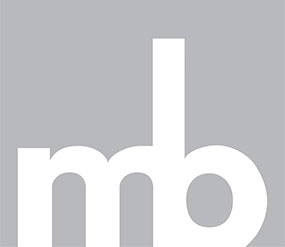By Rex Sears
Not quite four years ago, Mayo Collaborative Services v. Prometheus Laboratories, Inc.[1] prescribed a two-step analysis for applying the laws-of-nature exception to patent eligibility under 35 U.S.C. § 101. Less than two years ago, Alice Corp. Pty. Ltd. v. CLS Bank International[2] established that Mayo’s two-step analysis is not limited to laws of nature but applies also to the abstract-ideas exception. The Mayo two-step, especially as extended to abstract ideas by Alice, is new enough that people still struggle with it.
The first step of the analysis is deciding whether the patent claims at issue “are directed to one of those patent-ineligible concepts”—i.e., “laws of nature, natural phenomena, and abstract ideas.”[3] Recently, in an appeal brief challenging a district court ruling that invalidated patent claims because they were directed to the abstract idea of computer-settings migration, I encountered this argument:
The term “migration” appears nowhere in the claims of the Patents-in-Suit. Because the term “migration” is not in the claim language, it is evident that the District Court took the word “migration” from the specification … and grafted those words, and their accompanying concept, into the claim language. However, in construing the claims, a court is not permitted to construe language from outside the claims inconsistent with the claims themselves. By doing so, the Court injected an unclaimed abstract idea—settings “migration”—into the claims themselves …
The argument manifests a fundamental misapprehension of how Mayo step one works.
Between them, the four patents asserted in Alice[4] had 245 claims, each statutorily “presumed valid independently of the validity of other claims.”[5] But for step one of the Mayo inquiry, Alice boiled them all down to intermediated settlement—despite the fact that the phrase “intermediated settlement” does not appear in any of the claims, or anywhere else in the patents for that matter. The argument I quoted earlier ignores what happened in Alice.
More fundamentally, it confuses Mayo step one with claim construction. Like the characterization of an invention at Mayo step one, claim construction is an interpretive exercise undertaken by the judge (not the jury).[6] But the characterization of an invention at Mayo step one is no routine claim-construction inquiry.
In ordinary claim construction, the parties advance nuanced, competing interpretations of specific terms or phrases appearing in the claims and then support their positions with a combination of (1) learned treatise passages, dictionary definitions, and expert testimony about how certain words are used (or rather were used, at the time the application was filed) in the field of the invention, collectively termed “extrinsic evidence”; and (2) specific passages from the patent document and prosecution history illustrating idiosyncrasies or limitations in how the patent applicant used the terms, collectively termed “intrinsic evidence.” Claim construction is a careful, precise, analytical endeavor.
Mayo step one is not. Instead of a competition between finely tuned definitional proposals defended by careful parsing of reference material, Mayo step one is a battle of slogans. Mayo step one gives the practitioner a fundamentally rhetorical (not analytical) mission: formulating and selling an aphoristic summary of the invention.
Good litigators are good storytellers and Mayo step one is a stage for showcasing that skill. In ordinary claim construction, the invention narrative—i.e., the inventor’s story about what she was trying to do, and why, and how she decided to go about it—is at best a weak form of extrinsic evidence, counting for less than treatises and dictionaries; but at Mayo step one, that narrative assumes a central role, at least co-equal with the intrinsic evidence—while dictionaries drop out altogether and treatises, if they matter at all, only fill in general background information. Also, a patentee trying to resist an “abstract ideas” characterization of her invention is unlikely to find shelter in judicial pronouncements, made in other contexts for other purposes, “that there is no legally recognizable or protected ‘essential’ element, ‘gist’ or ‘heart’ of the invention in a combination patent”[7]; instead her best chance is to tell a better story, built around a competing slogan of her own.
Going back a step further, a farsighted prosecutor might anticipate this inquiry and stack the deck in favor of her preferred formulation of the Mayo step one answer by incorporating it directly into the claim preamble.
Decades before Mayo, Justice Stevens argued in his dissent from Diamond v. Diehr[8]:
The starting point in the proper adjudication of patent litigation is an understanding of what the inventor claims to have discovered. …
As the Court reads the claims … the inventors’ discovery is a method of constantly measuring the actual temperature inside a rubber molding press. As I read the claims, their discovery is an improved method of calculating the time that the mold should remain closed during the curing process. If the Court’s reading of the claims were correct, I would agree that they disclose patentable subject matter. On the other hand, if the Court accepted my reading, I feel confident that the case would be decided differently.[9]
In the age of Alice, the battle over characterization becomes, if anything, even more important—because although the task of characterization at Mayo step one might not be flexible enough for a court to read a method of calculation (or a natural law or phenomenon) into a claim not already incorporating one, “abstract idea” is open-ended enough to afford more latitude for a court to “find” one. Winning that battle requires recognizing it for what it is—and what it is not.
[1] 566 U.S. 10, 132 S. Ct. 1289 (2012).
[2] 134 S. Ct. 2347 (2014).
[3] Alice, 134 S. Ct. at 2355.
[4] Viz., U.S. Patent Nos. 5,970,479, 6,912,510, 7,149,720, and 7,725,375.
[5] 35 U.S.C. § 282(a).
[6] See Markman v. Westview Instruments, Inc., 517 U.S. 370, 372 (1996) (“the construction of a patent, including terms of art within its claim, is exclusively within the province of the court”).
[7] Aro Mfg. Co. v. Convertible Top Replacement Co., 365 U.S. 336, 345 (1961).
[8] 450 U.S. 175 (1981).
[9] Id. at 193–94, 206–07.
